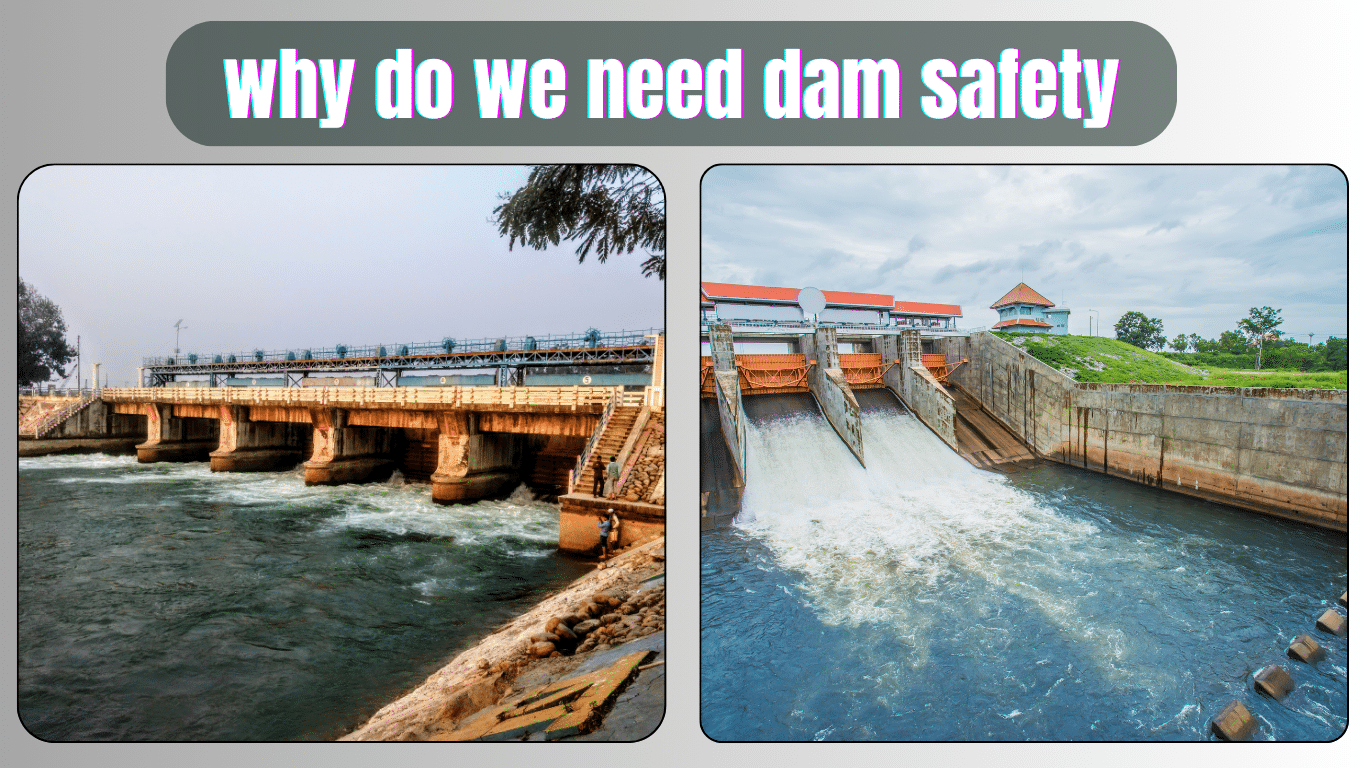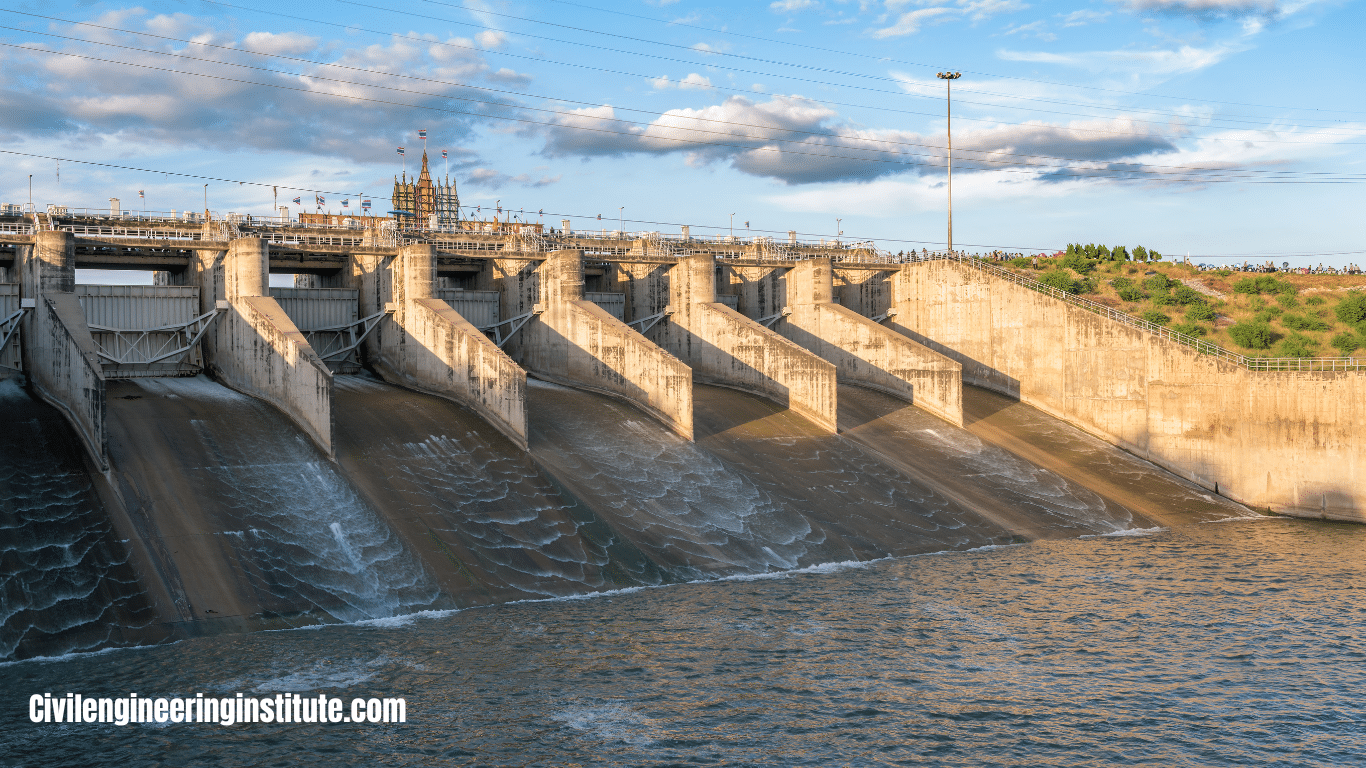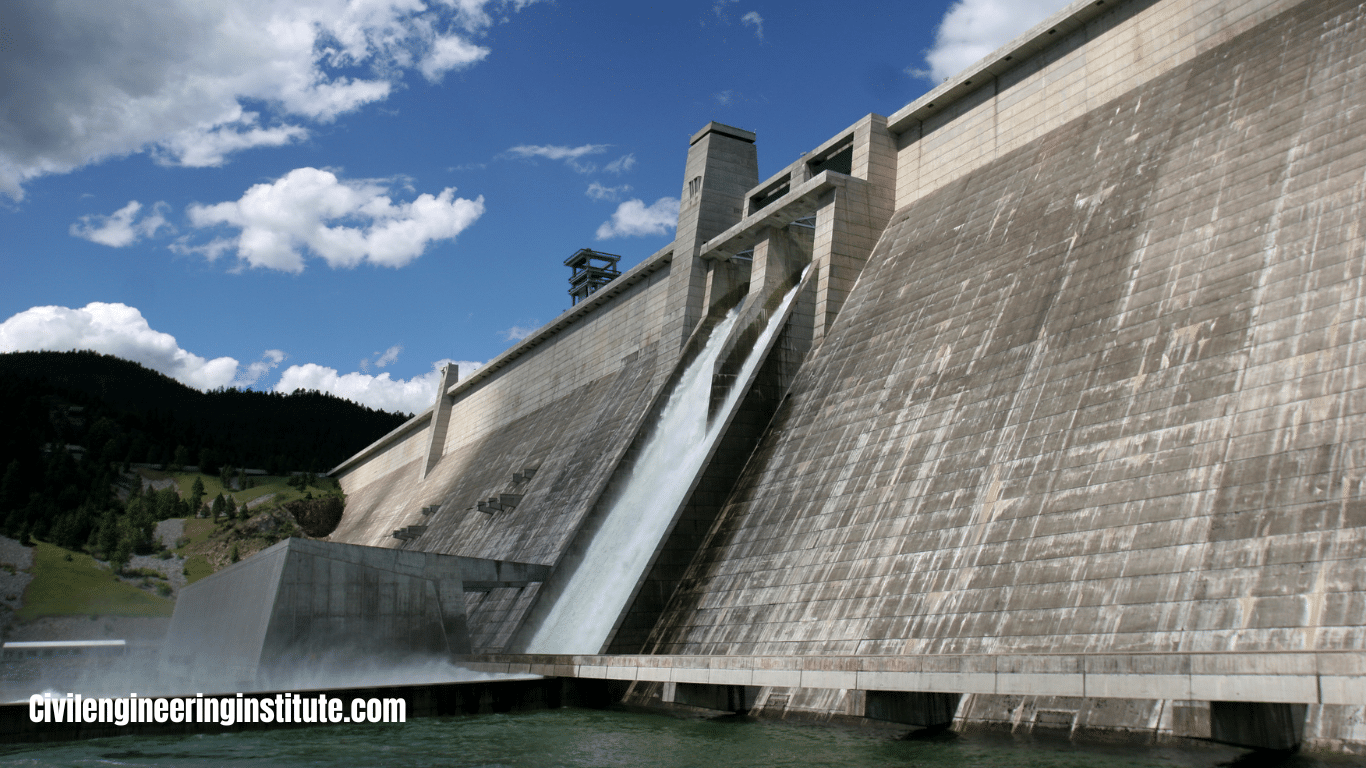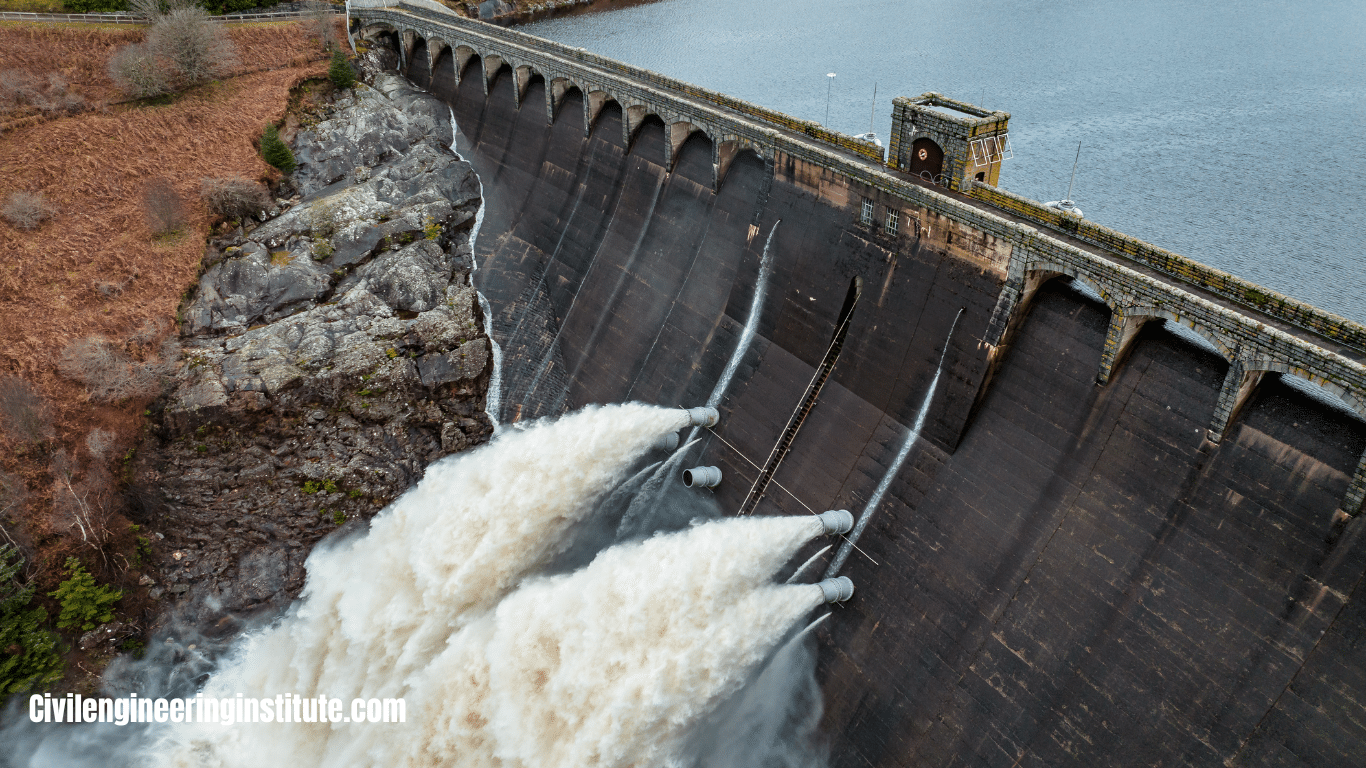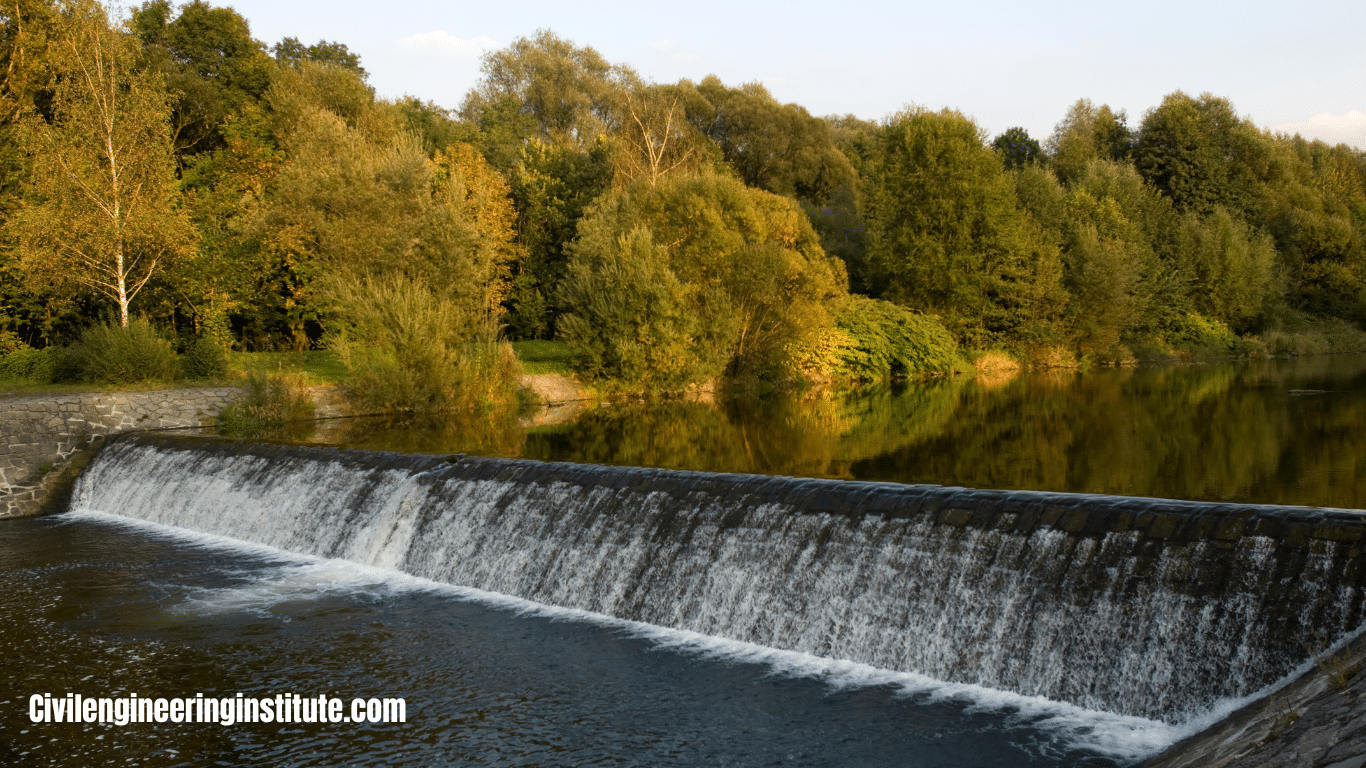Why do we need dam safety because dams play a vital role in our lives. Dams help us store water for drinking, irrigation, and generating electricity. They also protect us from floods by controlling the flow of rivers. However, if dams are not properly maintained or monitored, they can pose serious risks to people and the environment.
Dam safety ensures that dams are built, operated, and maintained in a way that minimizes these risks. It involves regular inspections, maintenance, and emergency preparedness to prevent failures and protect communities downstream. By ensuring dam safety, we can safeguard lives, property, and the environment from potential disasters.
Why do we need dam safety?
Dams are monumental structures that serve various purposes, from supplying water for irrigation and drinking to generating electricity. However, along with their benefits, dams also pose significant risks if not properly managed. This article explores the importance of dam safety, why it matters, and how it contributes to safeguarding communities and vital resources.
Understanding Dams: Their Importance and Risks
Dams are engineered barriers constructed across rivers and streams to impound water for various purposes. They play a crucial role in water resource management by regulating water flow, controlling floods, and providing water for irrigation and urban use. Additionally, dams contribute significantly to electricity generation through hydropower.
Despite their benefits, dams pose inherent risks, primarily related to safety and environmental concerns. Poorly maintained dams or inadequate safety measures can lead to catastrophic failures, resulting in loss of life, property damage, and environmental degradation. Hence, ensuring the safety of dams is paramount to mitigating these risks.
The Need for Dam Safety
- Protecting Lives and Property
- Preventing Environmental Damage
- Securing Water Resources
- Sustaining Economic Development
Protecting Lives and Property
Dam failures can have devastating consequences, causing loss of life and extensive property damage. By implementing dam safety measures, we can minimize these risks and protect the lives and property of people living downstream of dams.
Preventing Environmental Damage
Dam failures can result in significant environmental damage, including habitat destruction, water pollution, and ecosystem disruption. Ensuring dam safety helps mitigate these impacts, preserving the ecological balance of rivers and surrounding areas.
Securing Water Resources
Dams are essential for storing water during periods of surplus and releasing it during times of scarcity. Proper dam safety measures ensure the reliable supply of water for drinking, agriculture, and industrial use, thereby securing vital water resources for communities.
Sustaining Economic Development
Dams play a crucial role in supporting economic development through hydropower generation, irrigation, and flood control. By ensuring dam safety, we protect these infrastructures, thereby sustaining economic growth and stability.
Components of Dam Safety
- Risk Assessment and Management
- Regular Inspections and Maintenance
- Emergency Preparedness and Response
- Public Awareness and Education
Risk Assessment and Management
Conducting comprehensive risk assessments helps identify potential hazards and vulnerabilities associated with dams. By analyzing these risks, dam operators can implement appropriate management strategies to mitigate them effectively.
Regular Inspections and Maintenance
Regular inspections and maintenance are essential for identifying structural weaknesses, erosion, and other issues that may compromise dam safety. Timely repairs and maintenance activities ensure that dams remain structurally sound and functional.
Emergency Preparedness and Response
Developing emergency preparedness plans and response protocols is crucial for effectively managing dam-related emergencies. Training personnel, conducting drills, and establishing communication systems are vital components of emergency preparedness efforts.
Public Awareness and Education
Educating communities living downstream of dams about potential risks and safety measures is essential for enhancing preparedness and resilience. Public awareness campaigns can empower individuals to take proactive steps to protect themselves and their communities.
Challenges and Future Directions
Despite the importance of dam safety, several challenges exist in ensuring its effective implementation. These challenges include inadequate funding, outdated infrastructure, and competing interests in water resource management. Addressing these challenges requires concerted efforts from government agencies, dam operators, and stakeholders.
Looking ahead, advancements in technology, such as remote sensing and real-time monitoring systems, hold promise for enhancing dam safety measures. Additionally, incorporating climate change considerations into dam design and management is crucial for addressing evolving risks associated with extreme weather events and hydrological patterns.
Key points: Why do we need dam safety?
Importance of Dam Safety
Dam safety is of paramount importance due to the critical role dams play in various aspects of human life. Dams are vital structures built to store water, control floods, generate electricity, and provide water for irrigation and domestic use. However, without proper safety measures, dams can pose significant risks to communities and the environment. Ensuring dam safety helps protect lives and property downstream, prevents environmental damage, secures water resources, and sustains economic development. By implementing comprehensive safety measures, such as regular inspections, maintenance, and emergency preparedness, we can mitigate the risks associated with dams and ensure their safe operation for the benefit of society.
Importance of the Dam Safety Bill
The Dam Safety Bill is crucial legislation aimed at addressing the various challenges and risks associated with dams in India. This bill seeks to establish a robust regulatory framework for ensuring the safety of dams across the country. By providing guidelines for dam safety management, monitoring, and inspection, the bill aims to prevent dam failures and mitigate their potential impacts on lives, property, and the environment. Moreover, the Dam Safety Bill promotes transparency, accountability, and coordination among stakeholders involved in dam management, thus enhancing overall safety and resilience.
Ensuring Dam Safety
Ensuring dam safety involves a multifaceted approach that encompasses various measures and strategies. Key aspects of ensuring dam safety include conducting risk assessments to identify potential hazards, regularly inspecting and maintaining dam infrastructure, developing emergency preparedness plans, and raising public awareness about dam safety. Additionally, leveraging advanced technologies such as remote sensing and real-time monitoring systems can enhance the effectiveness of dam safety measures. By adopting a comprehensive and proactive approach to dam safety, we can minimize risks and ensure the reliable operation of dams for the benefit of society.
Dam Safety in India
In India, dam safety is a critical concern, given the extensive network of dams across the country and the potential risks associated with them. The Government of India has recognized the importance of dam safety and has taken steps to address it through legislation and regulatory mechanisms. The Dam Safety Act, along with the Dam Safety Guidelines issued by the Central Water Commission, provides the framework for ensuring the safety of dams in India. Additionally, the National Committee on Dam Safety (NCDS) oversees dam safety-related matters and facilitates cooperation between the central and state governments, dam owners, and other stakeholders to enhance dam safety across the country.
Dam Safety Act 2023
The Dam Safety Act 2023 is a significant legislative initiative aimed at further strengthening dam safety measures in India. This act builds upon the existing legal framework and incorporates updated provisions to address emerging challenges and enhance regulatory oversight. Key features of the Dam Safety Act 2023 include provisions for comprehensive risk assessment, regular inspection and monitoring of dams, mandatory maintenance requirements, and stringent penalties for non-compliance. By enacting this legislation, India demonstrates its commitment to ensuring the safety and integrity of its dam infrastructure to protect lives, property, and the environment.
Purpose of a Dam
The most important purpose of a dam is to manage water resources effectively for various societal needs. Dams serve multiple functions, including water storage for irrigation, drinking, and industrial use, flood control, hydropower generation, and recreation. By regulating the flow of water in rivers and streams, dams help meet the growing demand for water and energy while minimizing the risk of floods and enhancing water security. Overall, the primary purpose of a dam is to harness the power of water for the benefit of society.
importance of Dams in India
Dams play a crucial role in India’s development and economy by contributing to various sectors, including agriculture, energy, and water supply. India’s dams help facilitate irrigation to support agricultural productivity, generate hydroelectric power to meet energy demand, regulate river flow to prevent floods and provide water for domestic and industrial use. Additionally, dams contribute to regional development, water resource management, and environmental conservation efforts. Overall, the importance of dams in India cannot be overstated, as they are instrumental in supporting the country’s socio-economic growth and development aspirations.
Benefits of a Dam
The benefits of a dam are numerous and diverse, spanning economic, social, and environmental dimensions. Some key benefits of dams include:
Hydropower Generation: Dams generate clean and renewable hydropower, contributing to energy security and reducing dependence on fossil fuels.
Irrigation: Dams provide water for irrigation, enabling agricultural productivity and food security for communities.
Flood Control: Dams regulate river flow and mitigate the risk of floods, protecting lives and property downstream.
Water Supply: Dams store and supply water for domestic, industrial, and municipal use, ensuring reliable access to clean water.
Recreation: Dams create reservoirs that offer recreational opportunities such as boating, fishing, and tourism, benefiting local economies and communities.
Overall, dams play a crucial role in supporting socio-economic development, environmental sustainability, and quality of life for people around the world.
Full Form of Dams
The term “DAMS” stands for “dihydroxyacetone monosaccharide,” which is a chemical compound commonly used in cosmetics and self-tanning products. It is also a common acronym for “Database for Annotation, Visualization, and Integrated Discovery,” which is a bioinformatics resource used for analyzing gene expression data and biological functions. However, in the context of water management, “dams” refer to man-made structures built to impound water for various purposes, as discussed in the preceding sections.
Biggest Dam in India
The largest dam in India by volume of water stored is the Tehri Dam, located on the Bhagirathi River in Uttarakhand. Tehri Dam is a multipurpose rock and earth-fill embankment dam that forms the Tehri Reservoir, with a capacity of over 2.6 billion cubic meters. It serves multiple purposes, including hydroelectric power generation, irrigation, and flood control, making it a vital infrastructure project for India’s development and water management efforts.
Conclusion
In conclusion, dam safety is indispensable for protecting communities, preserving vital resources, and sustaining economic development. By implementing comprehensive safety measures, including risk assessment, regular inspections, and emergency preparedness, we can mitigate the inherent risks associated with dams. Moreover, addressing emerging challenges and leveraging technological advancements are essential for enhancing dam safety in the face of evolving environmental and societal pressures. Ultimately, ensuring dam safety is a collective responsibility that requires collaboration and commitment from all stakeholders to safeguard lives, property, and the environment.
FAQs
Why is dam safety important for communities?
This question addresses the significance of dam safety in protecting communities from potential risks associated with dam failures.
What are the consequences of inadequate dam safety measures?
This FAQ explores the potential consequences, such as loss of life, property damage, and environmental harm, resulting from insufficient dam safety measures.
How does dam safety contribute to water resource management?
This question delves into the role of dam safety in managing water resources effectively for various societal needs, including irrigation, drinking water supply, and hydropower generation.
What are the key components of ensuring dam safety?
This FAQ outlines the essential elements, such as risk assessment, regular inspections, maintenance, and emergency preparedness, involved in ensuring dam safety.
What is the significance of the Dam Safety Bill?
This question explores the importance of legislative measures, such as the Dam Safety Bill, in establishing a robust framework for regulating and ensuring the safety of dams.
How can individuals contribute to enhancing dam safety?
This FAQ discusses the role of public awareness, education, and community involvement in promoting and supporting efforts to enhance dam safety.
What are the emerging challenges to dam safety in the face of climate change?
This question addresses the evolving risks and challenges associated with climate change, such as extreme weather events and changing hydrological patterns, and their implications for dam safety.
What are the benefits of investing in dam safety measures?
This FAQ highlights the various benefits, including risk reduction, protection of lives and property, and sustainable water resource management, associated with investing in dam safety measures.
How does dam safety contribute to sustainable development goals?
This question explores the alignment between dam safety efforts and broader sustainable development goals, such as ensuring access to clean water, promoting economic growth, and building resilient infrastructure.
What are some examples of successful dam safety initiatives?
This FAQ showcases examples of successful dam safety initiatives, projects, and best practices implemented globally to mitigate risks and enhance the safety and resilience of dam infrastructure.
